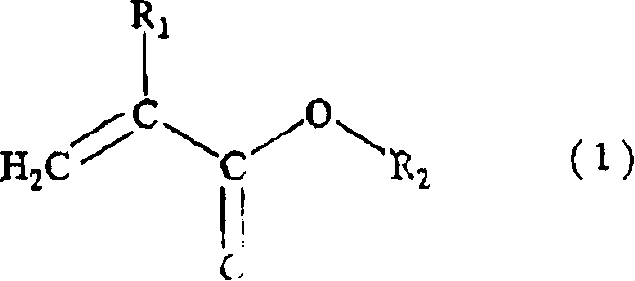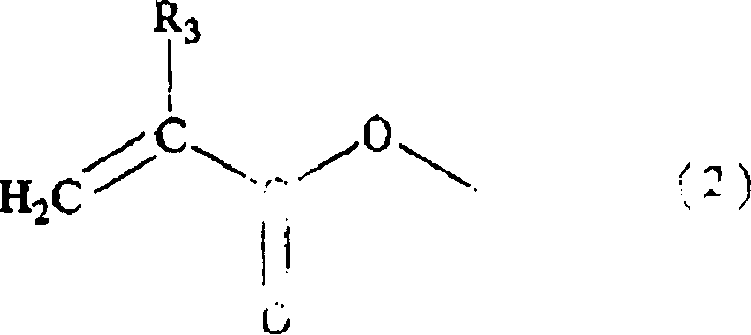Acrylic resin
A technology of acrylic resin and monomer, applied in the direction of epoxy resin glue, synthetic resin layered products, N-vinylpyrrolidone copolymer adhesive, etc., can solve the problem of uneven distribution of residual stress, light leakage, and TN liquid crystal cells Light leakage and other issues
- Summary
- Abstract
- Description
- Claims
- Application Information
AI Technical Summary
Problems solved by technology
Method used
Image
Examples
Embodiment 1
[0127]
[0128] To 100 parts of the solid component in the ethyl acetate solution of the acrylic resin obtained in the above-mentioned Polymerization Example 1 was mixed a polyisocyanate-based compound (trade name: Coronate L, manufactured by Nippon Polyurethane, The solid content is 0.5 parts) and γ-glycidoxypropyltrimethoxysilane (0.2 parts) as a silyl compound.
[0129]
[0130] Using an applicator, the obtained adhesive was applied on the peel-treated surface of a polyethylene terephthalate film (manufactured by Rintech, trade name: PET 3811) that had been peeled, so that it was dried After a thickness of 25 micrometers and drying at 90° C. for 1 minute, an adhesive in the form of a sheet was obtained. Then, a polarizing film (a film having a three-layer structure obtained by absorbing iodine in polyvinyl alcohol and stretching it and sandwiching it with triacetylcellulose-based substrate films on both surfaces thereof) was used as An optical film, and the surface wit...
Embodiment 2-6 and comparative example 1-3
[0153] Adhesives and optical laminates were produced in the same manner as in Example 1, except that the acrylic resin used and the added parts of the crosslinking agent were varied. Table 1 summarizes the evaluation results of the obtained acrylic resin and optical laminate. In Comparative Examples 1, 2, and 3, adhesives and optical laminates were produced in the same manner as in Example 1, except that the acrylic resins of Examples 4, 5, and 6 were polymerized, respectively. Table 1 summarizes the evaluation results of the obtained acrylic resins and optical laminates.
[0154] Example
[0155] * 1: Viscosity at 25°C and 30wt% resin concentration
PUM
| Property | Measurement | Unit |
|---|---|---|
| viscosity | aaaaa | aaaaa |
| viscosity | aaaaa | aaaaa |
Abstract
Description
Claims
Application Information
 Login to View More
Login to View More - R&D
- Intellectual Property
- Life Sciences
- Materials
- Tech Scout
- Unparalleled Data Quality
- Higher Quality Content
- 60% Fewer Hallucinations
Browse by: Latest US Patents, China's latest patents, Technical Efficacy Thesaurus, Application Domain, Technology Topic, Popular Technical Reports.
© 2025 PatSnap. All rights reserved.Legal|Privacy policy|Modern Slavery Act Transparency Statement|Sitemap|About US| Contact US: help@patsnap.com



